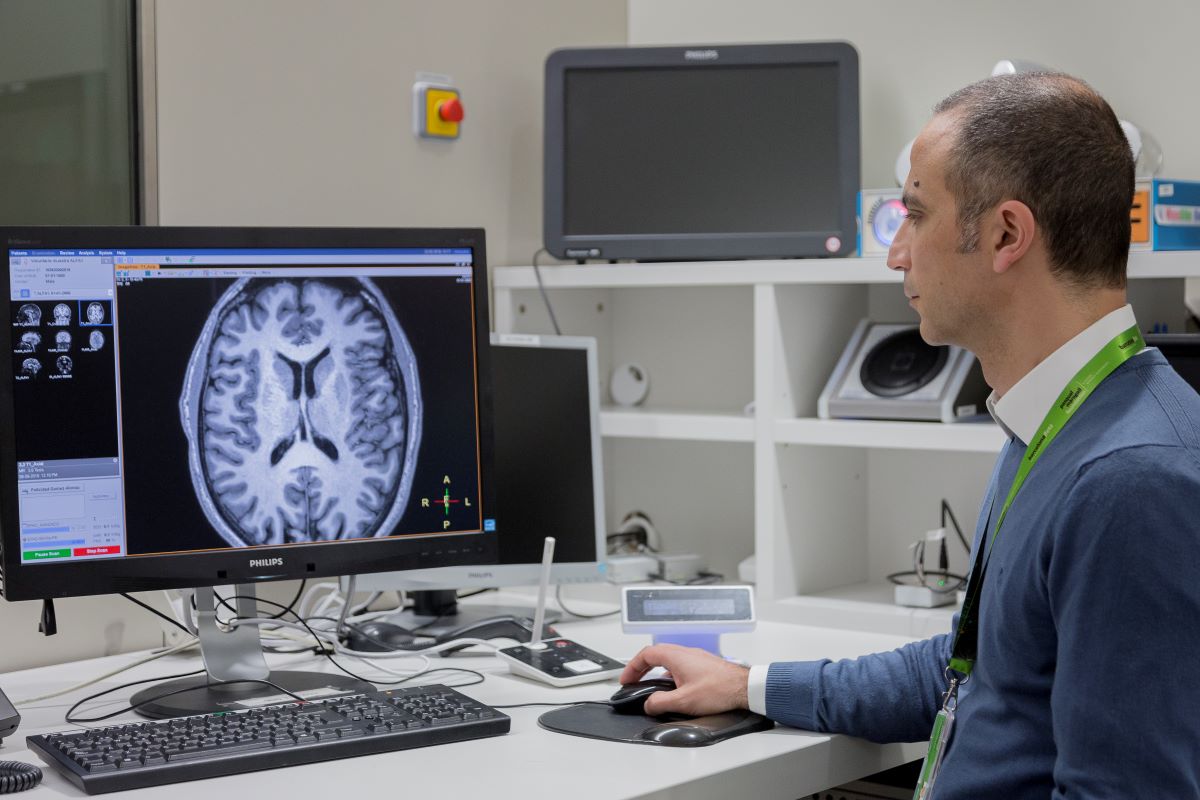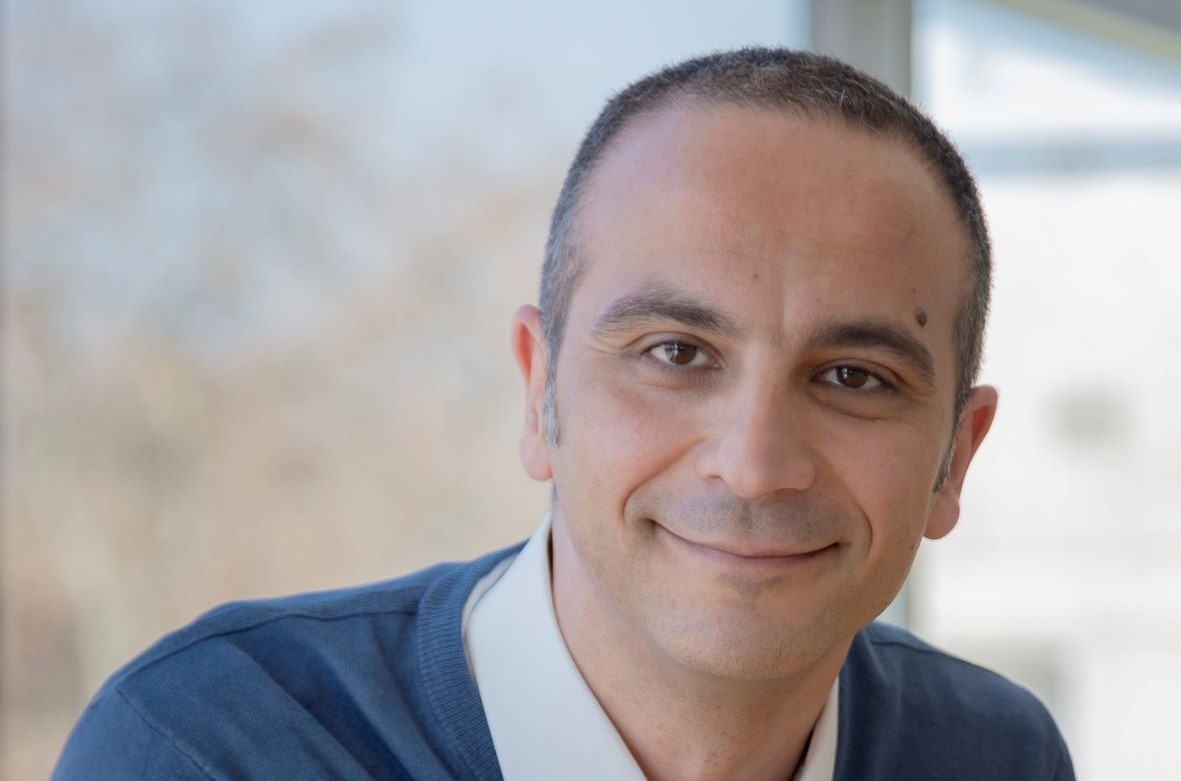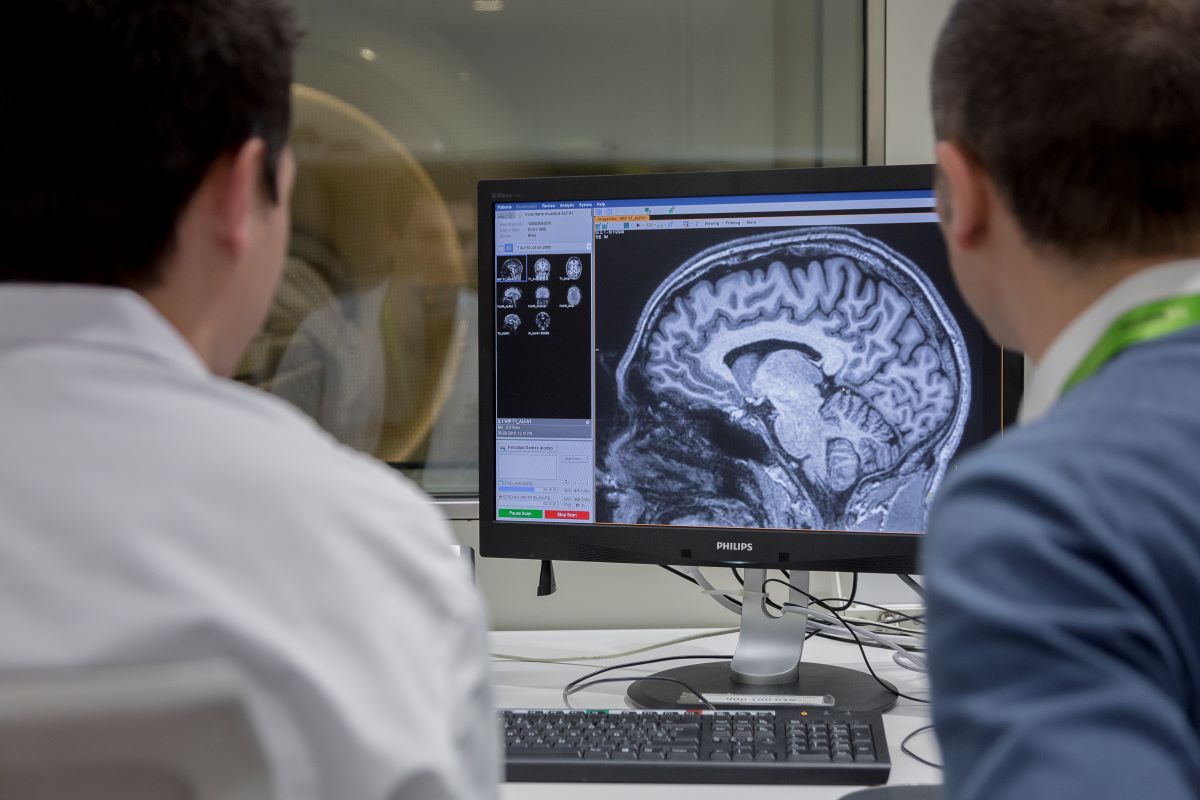29 Jun A key tool for the future of Alzheimer’s disease research

Doctor Juan Domingo Gispert and his team, from Barcelona Beta Brain Research Center, work in a tool to improve the selection of patients for Alzheimer’s prevention studies
Dr Juan Domingo Gispert, a researcher at the Barcelona Beta Brain Research Center -part of the Pasqual Maragall Foundation–
is leading a project that could accelerate the discovery of a new treatment for Alzheimer’s disease (AD). Right now there is no therapy to stop the progression of this neurogenerative disease that affects 44 million people in the world.
One of the main challenges to advance research is to select the right patients for the clinical trials. Dr Gispert and his team have developed an artificial intelligence algorithm that analyses magnetic resources imaging (MRI) to identify healthy people that have a strong probability of developing the disease. A tool that could be key for the future of AD research.
Why has all research failed so far to find treatments for Alzheimer’s disease?
There are efficient therapies to alleviate AD symptoms for a period of time. What we have not achieved is changing the course of the disease. In this regard, I think we need some perspective. More than one hundred years ago Alzheimer’s disease was described and we saw that it causes an abnormal accumulation of beta-amyloid plaques in the brain. But it has been only 20 years that we have been able to detect these plaques and study their evolution while the patient is alive. We have observed that the progression is very slow (plaques can be found over 20 years earlier the onset of symptoms). If we consider that each clinical trial takes five years to complete, we see that it is necessary to keep working to find an effective therapy against Alzheimer. I am optimistic.
Do you believe that a more accurate selection of patients for the clinical trials could shorten the time to find the right treatment?
Absolutely. This is one of the lessons we have learned. We see that the validated markers are not suitable to study the general population: they are either very expensive or extremely invasive. Having the appropriate tools to facilitate the identification of healthy people with high Alzheimer biomarkers would be key to improve our capacity to evaluate drugs. I believe this is the most promising line of research in Alzheimer’s.
Which has been the process to the development of your tool?
We have been working in this line of research for 10 years. We realised that in the pre-clinical phases of Alzheimer’s the brain’s suffers subtle morphological alterations and that artificial intelligence and quantitative techniques could help detecting them. Currently, the potential participants of a clinical trial focused on prevention have to undergo invasive and expensive techniques such as a lumbar puncture and a PET scan. Previously, an MRI has to be done to these patients for security reasons. From the beginning we knew that these imaging technique could bring efficiency to the whole process as only the patients that show biomarkers in the MRI would go to do the other tests.
Which is the competitive advantage of your product?
The main advantage is that our tool is “free”: we used information that was already available and we reduced to half the cost of clinical trials recruitment. The other fundamental advantage is that we have trained our algorithm with the best database in the world for this problem: the Pasqual Maragall Foundation’s ALFA study. That give us a clear competitive advantage.
I hope that in a few years we will also have biomarkers in blood, which will be a giant step for the development of solutions for Alzheimer’s disease. Our technology will be used in combination with other analytical techniques as it is don now with other diseases.
Which are the next milestones for your project?
We have validated our technology in the lab. Now we are going to test it in the real world. For this, we are going to integrate the technology in clinical trials. After that, we will do a clinical evaluation with real prevention clinical trials data. If we are successful, the tool will be ready to be used in clinical trials worldwide.


What is the potential of the machine-learning tool that are you developing?
Our tool could have a great impact in the efficacy of patient recruiting for clinical trials, which is right now the main obstacle for prevention studies. If we are able to eliminate the current barriers we will increase the capacity of testing new treatments and, most probably, we will find a solution in a shorter amount of time.
GENESIS Biomed works with Dr Gispert and his team to help them bringing their powerful innovation to market.


